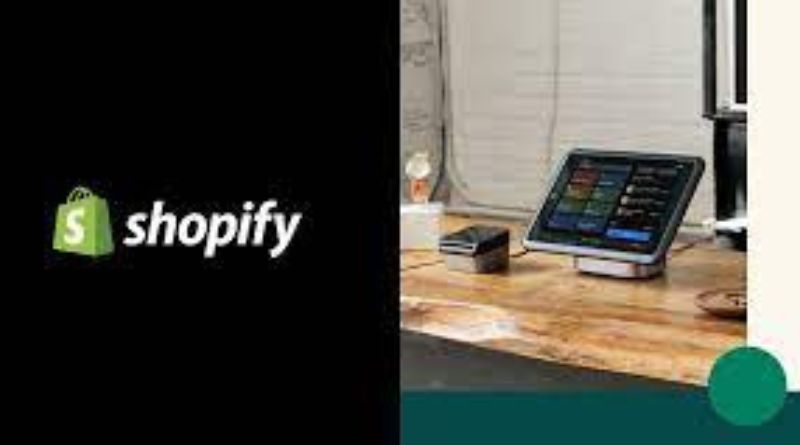10 Easy Steps to Using Shopify POS for Your Business
If you’re just starting out in your business and already have an online store, you might be wondering if there’s any benefit to upgrading to Shopify POS. The short answer is yes! Here are 10 easy steps on how to use Shopify POS in order to start growing your business today.
Step 1: Install the app
Start by opening up the app store on your phone. From there, search Shopify Easy Steps to Using Shopify POS for Your Business pos and open it. Follow the installation prompts and enter your information when you’re asked to log in or create a new account. After that, tap on Set Up A New Shop at the top of the screen, select a business type and click Done in the next window that appears. You should then be directed to a page with more details about using this app, but scroll down and tap on Skip Now.
Step 2: Register your business
First, you will need to register your business. There are three different ways you can do this, so find the right one for your circumstances:
1) Register with a Canada Revenue Agency as a Sole Proprietor and save yourself some headaches.
2) Become an incorporated company in your province or territory of residence and register with CRA.
3) Register at HMRC if you’re operating as a company in the U.K. unless you’re registered in Wales or Scotland where there’s an online registration option available.
How will using Shopify POS make things easier?
Registering your business allows you to easily take advantage of tax deductions, save money on taxes, buy equipment tax-free and receive rebates from the government.
Step 3: Log into the app
Tap the App icon on your device’s home screen and then follow the prompts to log in. To log in, type your store name (without https://) or email address, then tap login. You can also sign up as a new user. If you have not yet created an account with Shopify, you’ll be prompted to do so now. If you’ve forgotten your password or username, enter the email address associated with your account and tap Forgot Password? We’ll send you an email with instructions on how to reset it. Then select Continue Sign Up if this is not the first time signing up with this email address. If it is, continue signing up by entering a username and password that are easy for you to remember and confirm them both by re-entering them. The last step of signup is agreeing to our Terms of Service and confirming that you’re over 18 years old by checking off I am over 18. Congratulations! You just set up your store and logged in using Shopify POS!
Step 4: Add products to sell
To add a product, tap Products at the top of the screen. Make sure to tap on the correct category (e.g., Home and Living) so that your product will be displayed in that area of your store. You can also search by keyword if you don’t know the specific category your product belongs in by tapping Search. After you select a category or search term, then tap on Add Product. Fill out all the fields that are required for this product: Product name, SKU number, price, quantity, etc. Once you’ve added all the necessary information about your product, hit Save to keep it on the list. You can edit or delete any item from this list at any time by selecting it from the drop-down menu next to Edit/Delete at the bottom of this screen. When you’re ready to sell an item with Shopify POS–such as a t-shirt–you just have to tap Sell Now next to its name and choose which cashier position is open
The next step is adding inventory items:
To do this, go back up and tap Inventory > View All Items > Tap Add Item button > Fill out fields required > Hit Save
Step 5: Know your product information
This is the heart and soul of your product, this is what you want your customers to know about it. Tell them who created it and what it was created with. Give them information on shipping and exchanges, and tell them whether or not there are any special offers currently available. Remember, everything should be in easy-to-understand language, so choose your words carefully so that anyone can understand the product, its details, and its benefits.
Step 6: Choose your product options
Your product options define the variations of your product. This is where you add and take away any details that make your product special. If a customer can’t find what they want from your defaults, they can also choose options like material or length of the sleeve at this stage in order to find what suits them best.
If you were selling earrings, for example, you might want to offer all different kinds and show how many are available, what kind of stones are used in them (shape and size), whether they’re pierced or studs, and so on. You may also want to show how customers can use the filter bar on their left to narrow down their selection based on things like price, style, and more. These details will allow shoppers to quickly find exactly what they’re looking for.
Step 7: Set tax rates & apply discounts
Taxes are one of the most important aspects of running a business, and your tax rates should be set in this section. Taxes are decided by the following factors:
-Location (where does your store ship to?)
-Type of products sold (are you selling taxable or non-taxable items?)
The United States government has an income tax system based on graduation rates. In other words, different income levels will be charged different rates depending on how much they make annually. As a business owner, you would not want to set taxes in such a way that you collect more than is required because this could lead to penalties as well as it being hard for your customer if they were expecting their purchase to be complete with tax already included.
Step 8. Get cash ready
After you receive your receipt, tap the ‘Cash’ button. This will open a dialog box where you can choose how much cash and what currency you would like the cashiers to hold onto. You’ll then want to decide on which till (A or B) to create the drawer at by selecting that option from the top of the screen. Tap ‘Next’. From there, tap each of your tills and select whether they should have cash available or not. After that, scroll down and choose whether receipts should print on their own or be emailed if it’s compatible with your system. One thing we love about this is that if a customer leaves before paying, you can easily access all of their items remotely using integrated security features so you’re able to still process their payment from afar.
Step 9. Invoice customers when they purchase products
Next, you’ll want to set up the billing email so that it automatically sends out an invoice each time a customer purchases a product. For this, follow these easy steps:
– Log in to your Gmail account (Gmail)
1. Go to the settings menu by clicking on the gear icon (gear icon )
2. Select create an automated filter from the choices listed under filters and click next ).
3. This will take you to a screen where you’ll need to type in the phrase a new order from {store name} (phrase ).
4. Click Next again
5. You’ll see that phrase appear as the name of your filter
6. Make sure the phrase includes at least one word before or after your store’s name
7. The complete example should read something like a new order from Victoria’s Secret
8. From there, select which emails you’d like this filter to apply to
9. In my case, I selected all emails
10. To save this filter just hit save.
Step 10. Print receipts at the end of every day
The most important thing is to print a receipt at the end of every day, as you’re doing cash-wrap. From there, customers can look back and see exactly how much they spent, where they shopped, and what they bought. They’ll also have a way to get their money back if anything is wrong or if it’s just not the right fit for them. You should make sure that the ink cartridge in your printer is never empty; otherwise, all of your receipts will be illegible when printed.






